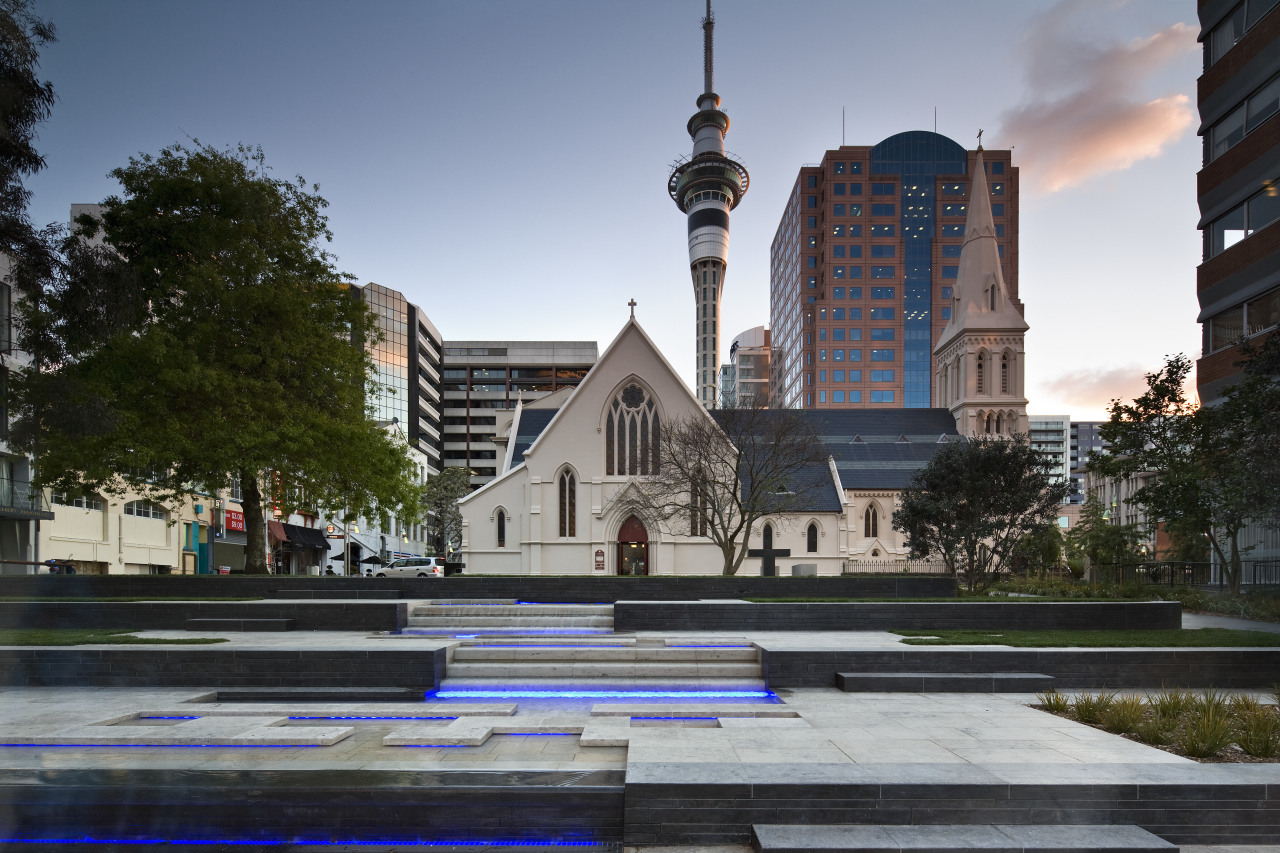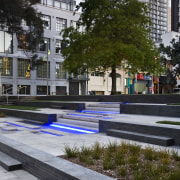heart FULL OF SOUL
Inner-city Auckland is evolving into a cohesive, world-class environment and the vision of Auckland City Council for public spaces such as St Patrick's Square is a key factor
Auckland City Council is fast transforming our largest city into a thriving international business and cultural centre. Over $965 million has been invested over a 10-year period towards achieving this goal. St Patrick's Square is just one of a string of projects that is changing the face of Auckland's CBD.
In the award-winning rejuvenation of historic St Patrick's Square, and the equally lauded upgrade of Queen Street, the design-led placemaking ethos is paramount. It encompasses everything from the Ministry for the Environment's Urban Design Protocol to complex transport and foot traffic considerations and is demonstrated though a collaborative approach to project management.
Ludo Campbell-Reid, group manager of Urban Design at Auckland City Council, says the council's urban design principles seek to create a city that is distinctive, compact, connected, sustainable, beautiful and decidedly human.
"This vision is already impacting considerably on Auckland's city centre," says Campbell-Reid. "Recent upgrades such as St Patrick's Square, combined with a raft of other innovative plans for shared space in the near future, reflect a city in dynamic transformation."
Located in front of one of the city's most beautiful buildings the recently restored St Patrick's Cathedral the upgrade of St Patrick's Square has created a distinctive inner-city destination. Completed in 2009, the restrained design, complemented by contemporary artworks, creates a strong sense of place and beauty.
St Patrick's Square has evolved from a somewhat underutilised space into a popular urban oasis. It has become a place for residents and families to bring children to play, for travellers to take a break from sightseeing, and for workers and friends to enjoy. The transformation also means the square is now a viable location for organised events or performances.
"By actively creating people-focused spaces, urban design promotes healthy social experiences and encourages the development of a cohesive urban community," says Campbell-Reid. "This is not just for those in the immediate vicinity it promotes a city-wide sense of pride and ownership of our civic spaces."
Naturally, urban design influences the economic health of the city, as well as its social wellbeing.
"While the overall value of investment in a public upgrade cannot be easily quantified in dollars, research shows that effective urban design of a public space can stimulate wider regeneration and investment in an area and engender higher market prices," says Campbell-Reid.
The $9.2 million upgrade of the square is another highly successful step in the Auckland City Council's 10-year programme to transform Auckland's streets and open spaces into central elements of a world-class city. The areas selected for upgrade are viewed as transformational for the CBD and critical to the city's future identity.
Deb Godinet, group manager of the council's CBD Projects team, says that at the outset of the St Patrick's Square project, people from every avenue of society church-goers, business owners, people who visit the square for enjoyment told us what they hoped for the future of the square. The design responds directly to these wishes.
"Our brief to landscape architects Boffa Miskell was to create a high-quality, safe and comfortable day and night environment that encouraged social interaction," says Godinet. "We wanted to retain and enhance the sense of an urban oasis and celebrate the square's heritage, its religious and cultural significance and its relationship with St Patrick's Cathedral. We also wanted to integrate the square into the wider pedestrian network. The increasing number of people visiting, spending time and passing through is proof that the design has more than answered the brief."
While the square in its old form had areas of space that were concealed and unusable, there are now a greater number of formal and informal seating areas, additional water features, more planting and additional lighting. These elements contribute to the sense of wellbeing for users, making the square a much more attractive and desirable place to spend time.
"Like cities all over the world, Auckland is highly complex and constantly evolving," Campbell-Reid says. "Auckland City Council's urban design principles of creating inner-city breathing spaces that respond to the needs of all is part of a greater vision to create a vocabulary of city-wide societal connectivity.
"High-quality urban design is the key to sustainable cities and is proven to lead to economic, social, cultural and environmental wellbeing. Fundamentally, it is the glue that holds the city together."
For more information on the Auckland City Council's Urban Design initiatives, visit the website: www.aucklandcity.govt.nz.
Story by: Trendsideas
Home kitchen bathroom commercial design
Diving into nature
Personality plus
Classic looks, contemporary efficiency








